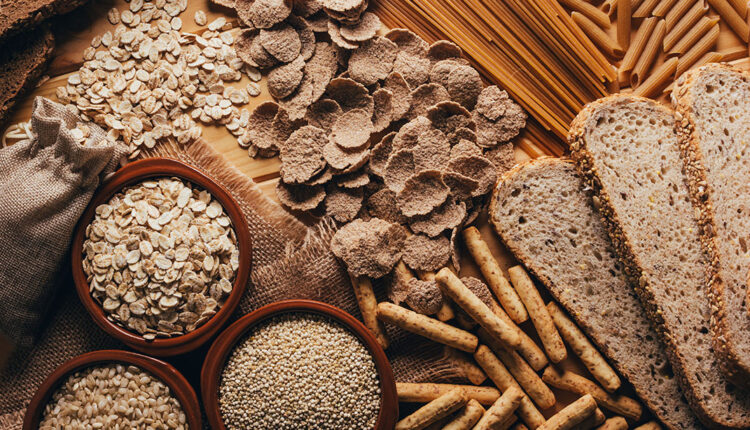Among the many buzzwords in the fitness world today, “good carbs” seem to be forever trending. From Instagram hashtags to food labels, it’s safe to say the catchphrase is here to stay.
Consuming the right (or “good” carbs) can help boost athletic performance, enhance mood, and improve exercise recovery.
But what exactly are good carbs? Here, Lauren Manaker, award-winning registered dietitian and three-time book author with over 20 years of practice, gets down to the bottom of what good carbs are and why you don’t have to fear pasta or even certain processed carbs.
The Low Down on ‘Good’ and ‘Bad’ Carbs
If good carbs exist, so do bad carbs. And with all this ‘carb talk’ stretching across the internet, it can get pretty confusing. Manaker breaks down the difference between the two most talked about carbs.
“Generally, people refer to “good carbs” as those that aren’t ultra-refined. Refined carbohydrates are grains that have undergone processing, which removes the bran and germ, resulting in a finer texture and longer shelf life; but also stripping away essential fiber, vitamins, and minerals, explains Manaker.
“This process leaves behind simple carbohydrates that the body breaks down quickly, often leading to rapid spikes in blood sugar levels” This is the reason why those with fitness goals tend to avoid these carbs due to their effect on insulin levels.
Because of this, what some may call “good carbs” tend to have more fiber, antioxidants, and nutrients than “bad carbs”—the carbs that spike insulin and contain fewer vitamins and minerals than their counterpart.
Good to know: Manaker explains it is important to note that there is no official definition of a “good carb” or a “bad fish.” Health professionals tend to avoid labeling foods “good” or “bad,” and instead look at the overall diet.

You Can Enjoy Processed Carbs, Here’s How to Choose the Cleanest on the Shelves
When choosing ultra-processed options, it is important to understand that not all refined carbs are created equal, and yes, you can still enjoy (some) packaged carbs. “Some processed carbs can be a beneficial part of a balanced and healthy diet, especially if they are enriched with nutrients (like certain b-vitamins) and are free from added sugar and salt.” Manaker further points out the USDA recommends half of the grains we consume should be whole grains, meaning that the other half may be refined. “The USDA does note that the refined grains people choose should be enriched, meaning they should be provided with additional nutrients like B vitamins and iron.”
Look for this when shopping for processed carbs
- Free from added sugar
- Free from copious amounts of added salt
- Enriched with b vitamins and iron
- Free from artificial colors or flavors
The Benefits of Eating Good Carbs
No matter what you’ve heard, carbs aren’t the enemy; they’re essential. “Consuming carbohydrates plays a crucial role in maintaining a balanced diet and providing the body with the necessary energy,’ explains Manaker. They provide clean energy for daily tasks and long workouts along with vital nutrients for the mind and body.
Carbolicious Benefits:
- Carbs are the primary fuel for the brain and muscles during various activities, especially high-intensity exercise.
- Carbs help preserve muscle mass by preventing the body from using protein as an energy source
- Carbs support digestive health by promoting bowel regularity through dietary fiber – (Plus, they taste great!)
Eating enriched refined carbs is not empty calories. “They provide certain micronutrients and offer a shelf-stable, often more economical carb source that can be a part of a balanced and healthy diet,” Manaker explains the key to success is to choose what you enjoy with your carbs. (Ideally, pairing veggies, healthy fat, and lean protein with your enriched refined carbs).
Bring On the Pasta
And there’s even better news: pasta is not off limits. “For example, enjoying a dish made with one serving of Pasta Rummo pasta, olive oil, garlic, roasted vegetables, and lean protein (like chicken or fish) can be an incredibly nutrient-dense and healthy addition to many diets.” Opting for Pasta Rummo allows people to benefit from their pasta-making method, known as “Lenta Lavorazione,” which results in a higher-than-usual protein content, at about 8g per serving and no added sugar.” Perfect for pre-workout fuel.
Don’t Hate on Grains
In the same way carbohydrates got a bad rap over the years, so did grains. “Some people tend to group all grains that are not whole grain into the same category, and automatically label them as “bad”. It is important to note that a donut will not offer the same health benefits as a serving of traditional pasta enjoyed with healthy fats, veggies, and lean protein,” says Manaker. Pasta, for example, has a lower glycemic index; it contains protein and fiber, and can be enjoyed with many nutrient-dense foods.
To Recap:
- Carbohydrates are essential.
- “Good carbs” are not ultra-refined and host more vitamins and minerals than highly processed carbs.
- “Bad” carbs consist of fewer vitamins and minerals than ‘good cars’ and can in turn spike insulin.


Comments are closed.